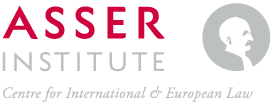Expert Meeting on International Regulation of Warfare and Dual-Use Technologies
Published 12 November 2020On 11 November 2020, Project leader Dr Berenice Boutin organised an online Expert Meeting together with the Ministry of Foreign Affairs of the Netherlands. The topic of the meeting was ‘Addressing Gaps in the International Regulation of Warfare and Dual-Use Technologies: States, Private Sector, Non-State Armed Groups’.
In terms of scope, the meeting focused on warfare and dual-use technologies posing a threat to security now or in the future. For the purpose of the meeting, warfare and dual-use technologies were defined as technologies developed or deployed by States or non-State actors and with the potential of causing significant material or physical damage. They include robotics, military armed drones, commercial drones with a potential to be weaponised, drone swarms, cyber-attack technologies (i.e., malware), and weapons systems with varying degrees of autonomy in critical functions.
The thematic focus of the meeting concerned international legal aspects. In particular, the meeting sought to precisely identify whether and where international law and existing regulatory frameworks present gaps and uncertainties concerning the regulation of warfare and dual-use technologies. The meeting explored the issue of regulatory gaps both at the normative and interpretative levels. In particular, experts were asked to reflect on the following two key questions:
(1) Normative gaps: Where does international law fall short of effectively regulating warfare and dual-use technologies and their hardware and software components?
The meeting addressed the question of whether there exist normative gaps and legal lacunae in the international law framework that would warrant the need for the adoption of a new instrument, and whether established norms can fully grasp the novel and complex risks raised by certain technologies. It explored whether new international initiatives are necessary to regulate in particular the conduct of private actors and non-State armed groups which produce or use warfare and dual-use technologies.
(2) Interpretative gaps: In which areas could interpretative guidelines be developed to strengthen existing international law in relation to warfare and dual-use technologies?
The meeting further sought to identify interpretative gaps, legal uncertainties, and grey zones, where existing laws apply but needs to be (re-)interpreted in the specific context of warfare and dual-use technologies and possibly refined through guidelines and other soft instruments.
During this meeting, Project member Prof. Dr Terry Gill presented on ‘Article 36 Additional Protocol I: Scope and Limitations’, and Project leader Dr Berenice Boutin presented on ‘The Duty of States to Ensure Respect for International Law by Private Companies: An Opportunity for Guiding Principles Regarding Security Technologies?’.

